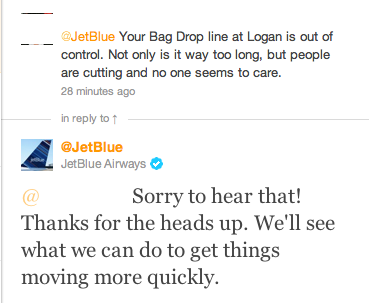Over the past few days, I’ve been working on a presentation I’ll be sharing with some folks here in Toronto at the upcoming Social Media Masters event. My focus: emotional marketing. We know that people seek to repeat activities that will make them feel positive emotions (happiness, calm, joy).
Why is this important to marketers today? Because, quite frankly, we’re not always great at creating experiences that generate positive emotions. Let’s face it, the last time you bought toothpaste, how special did you feel? Better yet, did you feel anything?
You want to be memorable, to make someone feel something for your brand. So memorable, in fact, that your consumer should want a “second date”. There are three potential outcomes for any interaction between your brand and your consumer:
- A neutral experience:
This is just general bad practice. Sure, you may be lucky enough to be in an industry like toothpaste where it’s a basic necessity but you’re still on a slippery slope. From a consumer’s perspective, a neutral experience results in an I-could-take-it-or-leave-it state of mind. These experiences are not too difficult to put together – the basic premise: don’t screw up and have a reasonable or acceptable product or service.
If all you want to do is compete on price, then knock yourself out!
- A bad experience:
OK, the word “bad” explains it all. When a consumer has a bad experience, as the rhetoric goes, he/she will tell at least 10 people; that is, of course, if we lived in a time and place without twitter! But here’s the thing: you CAN fix it.
There is a belief that if you can rectify a bad experience, it is even MORE memorable than a good experience. Why? Because of the extreme emotions involved. When a person feels something – good or bad – the memories are always stronger than in a neutral experience. And if you can take negative emotions and transform them into positive ones, you’ve now tapped into two sets of (usually) strong emotions.
When you notice that someone has had a bad experience with your brand, don’t panic – ACT! Own your brand; own the experience; and make it better. Look, we’re all people – we know how we would like to be treated (see lessons you learned in kindergarten), so make it right and you can earn points. Ignore it or only consider your brand’s interest and you lose.
Your choice really.
- A good experience:
This one’s easy right? A consumer (potential or existing) learns about your product/service, buys it, uses it and loves it. Everything is perfect!
But like any good relationship, hard work is required. The brands that succeed in creating great experiences for their consumers are the ones that have sweat the details; the ones that genuinely care; the ones that do those little extras that make people take notice and feel something.
To do this right, think of your relationship with your consumer the way you would any other relationship in your life.
It’s never difficult to think about the right thing, but do you have the courage to actually do it? Creating great experiences is not about the thought – it’s about taking action.
Independently of the perception that Kia has in the market, for example, here is a company that demonstrates true compassion. Their action changed a family’s life, and changed people’s perceptions of their brand… or at least, it did mine. (You’ll thank me for the tissues.)
Does your brand create great experiences?
Judi Samuels


